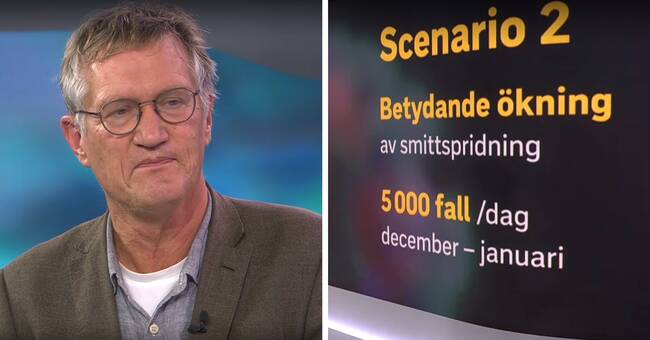Björn Olsen, professor of infectious diseases, is one of those who criticize the Public Health Agency's decision that fully vaccinated, from 1 November, no longer need to be tested for symptoms.
- As it is a completely new situation and we are starting to lose vaccination coverage among many of the elderly, we can very well see a fairly large and strong peak with vaccinated people who fall ill.
If we then have no idea how big the spread of infection is in society, then maybe we simply let it go too much.
Then perhaps the sensitive will be exposed completely unnecessarily, says Björn Olsen and continues:
- We will grope blindly, and we will see the effect of the lack of testing in the form of an increased number of hospitalized, seriously ill and even deaths, says Björn Olsen, who is also supported by epidemiologist Tove Fall in Aktuellt.
"Looking at the top of an iceberg"
State epidemiologist Anders Tegnell is not worried that the authority would lose control.
- He has obviously not read about what we recommend.
We continue to recommend that everyone who needs hospital care be tested.
We will continue to test a lot in infection tracking, so many will also be tested in the future, says Anders Tegnell.
He believes that there are many other ways to look at the infection without trying, and that even today there are many infected who are never tested.
- We know that we are constantly looking at the top of an iceberg.
And we have become very good at following the top and see what it means when it changes.
Effect wears off
Several countries are now reporting on how the infection is increasing.
Britain, which lifted its restrictions three months ago, is now once again one of the hardest hit countries in Europe.
One of several possible explanations is that many had been vaccinated at an early stage and that the effect is now beginning to disappear.
Anders Tegnell says that it is difficult to know how fast the vaccine wears off.
- The numbers are not completely unambiguous, it sounds like but how fast it goes varies a lot.
In Sweden, 80 percent of the population has now been vaccinated with two doses and 84.6 percent have received at least one dose.
In both the UK and Sweden, the big challenge is to reach the last 20-30 percent who have not yet been vaccinated, says Tegnell.
- There are groups that take significantly longer to reach, that require better and more information and it takes longer.

